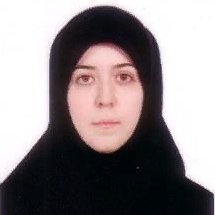
Rahebeh Niaraki Asli
Work place: University of Guilan, Department of Electrical Engineering, Rasht, Iran
E-mail: niaraki@guilan.ac.ir
Website:
Research Interests: Algorithm Design, Information Systems, Computer Architecture and Organization, Computer Vision, Computer systems and computational processes
Biography
Rahebeh Niaraki Asli received her B.S. and M.S. degrees in Electronic Engineering from the University of Guilan, Rasht, Iran, in 1995 and 2000, respectively. Also, she received Ph.D. degree in electrical engineering from the Iran University of Science and Technology, Tehran, Iran, in 2006. From 1995 to 2002 she has worked in electronic laboratories of the Department of Electrical Engineering in the University of Guilan. During 2002 to 2006, she was with design circuit research group in the Iran University of Science and Technology electronic research center (ERC) and CAD research group of Tehran University. Since 2006, she has been an Assistant Professor in Department of Electrical Engineering, Engineering faculty of Guilan University. Her current research interests include reliable and testable VLSI design, object tracking and machine vision systems.
Author Articles
Recognition and Classification of Human Behavior in Intelligent Surveillance Systems using Hidden Markov Model
By Adeleh Farzad Rahebeh Niaraki Asli
DOI: https://doi.org/10.5815/ijigsp.2015.12.05, Pub. Date: 8 Nov. 2015
Nowadays, the human behavior analysis by computer vision techniques has been an interesting issue for researchers. Automatic recognition of actions in video allows automation of many otherwise manually intensive tasks such as video surveillance. Video surveillance system especially for elderly care and their behavior analysis has an important role to take care of aged, impatient or bedridden persons. In this paper, we propose a high accuracy human action classification and recognition method using hidden Markov model classifier. In our approach, first, we use star skeleton feature extraction method to extract extremities of human body silhouette to produce feature vectors as inputs of hidden Markov model classifier. Then, hidden Markov model, which is learned and used in our proposed surveillance system, classifies the investigated behaviors and detects abnormal actions with high accuracy in comparison by other abnormal detection reported in previous works. The accuracy about 94% resulted from confusion matrix approve the efficiency of the proposed method when compared with its counterparts for abnormal action detection.
[...] Read more.Other Articles
Subscribe to receive issue release notifications and newsletters from MECS Press journals